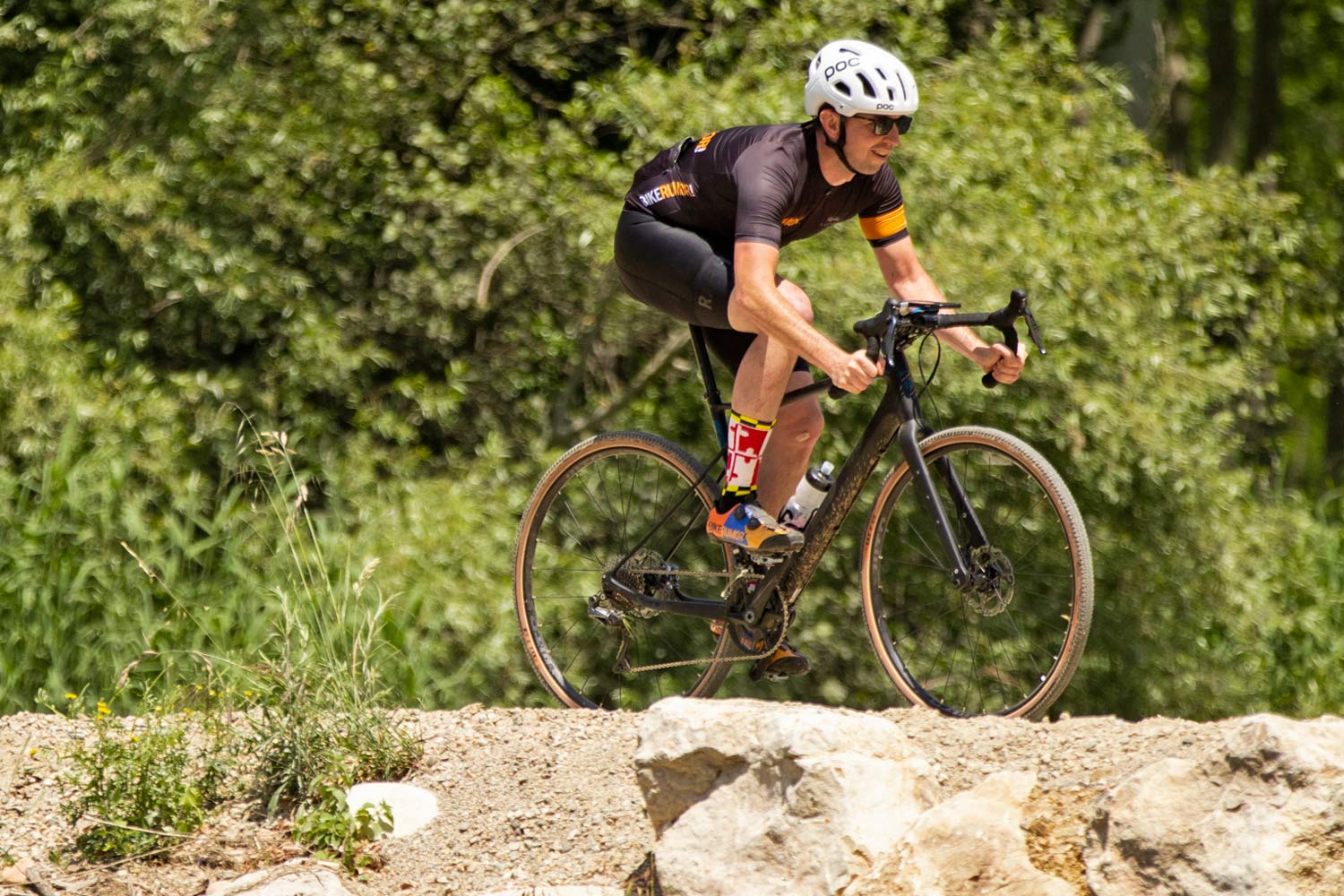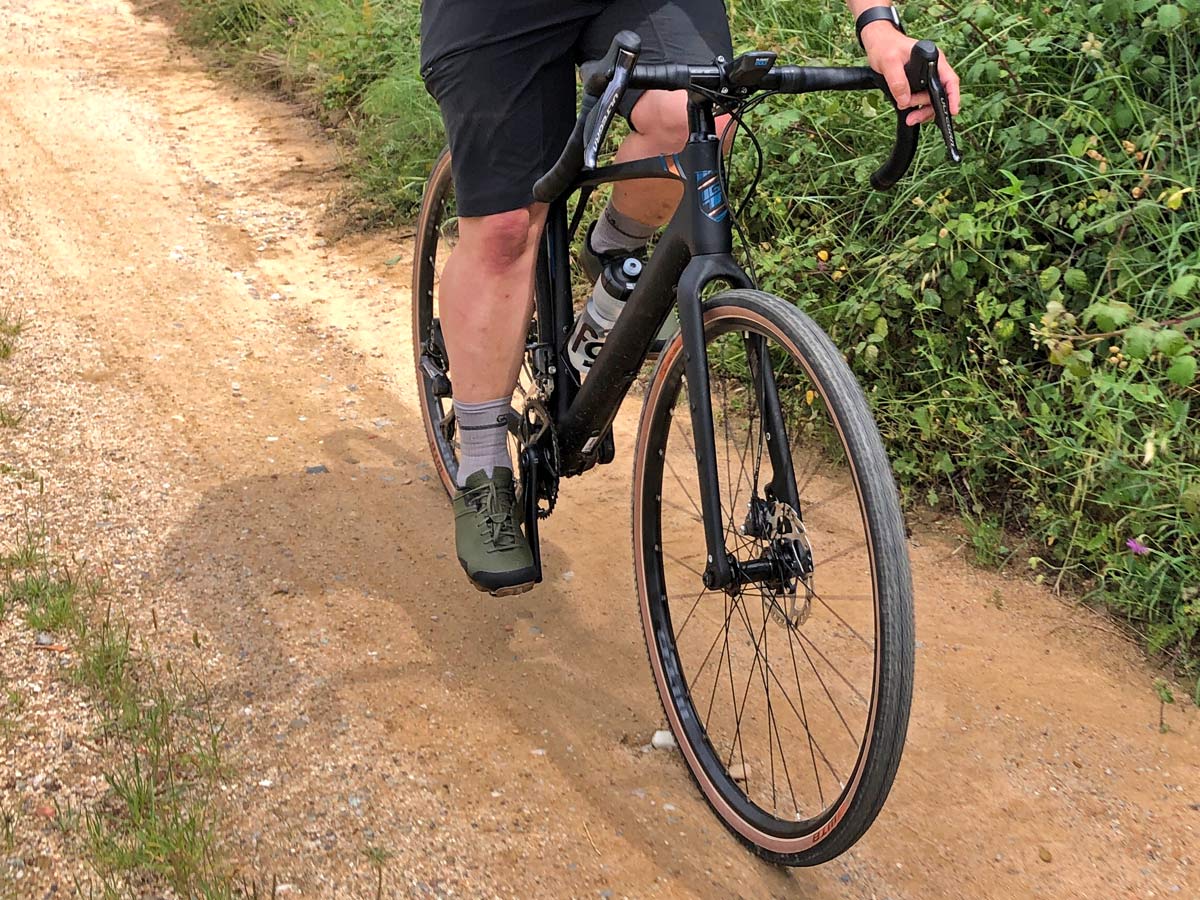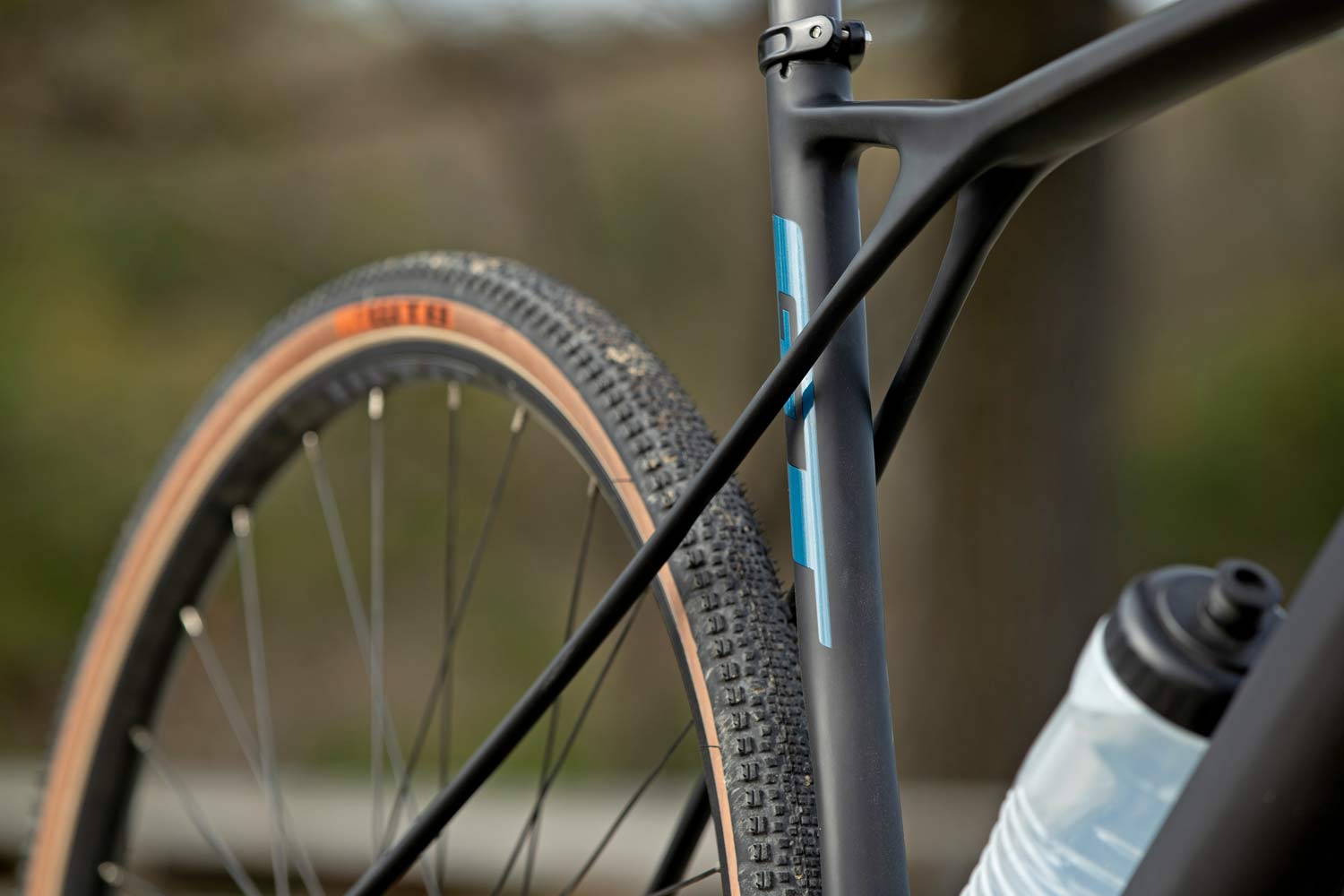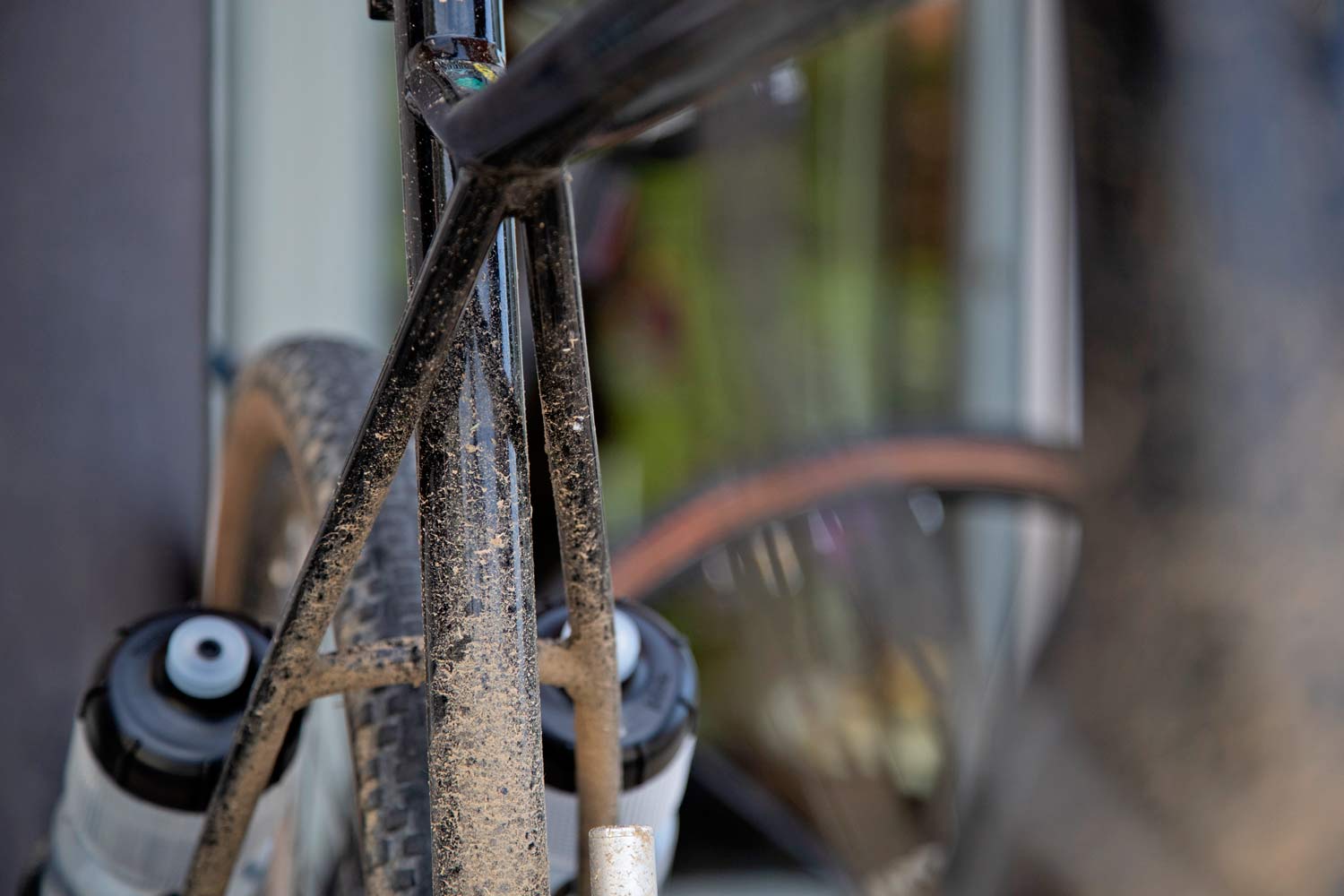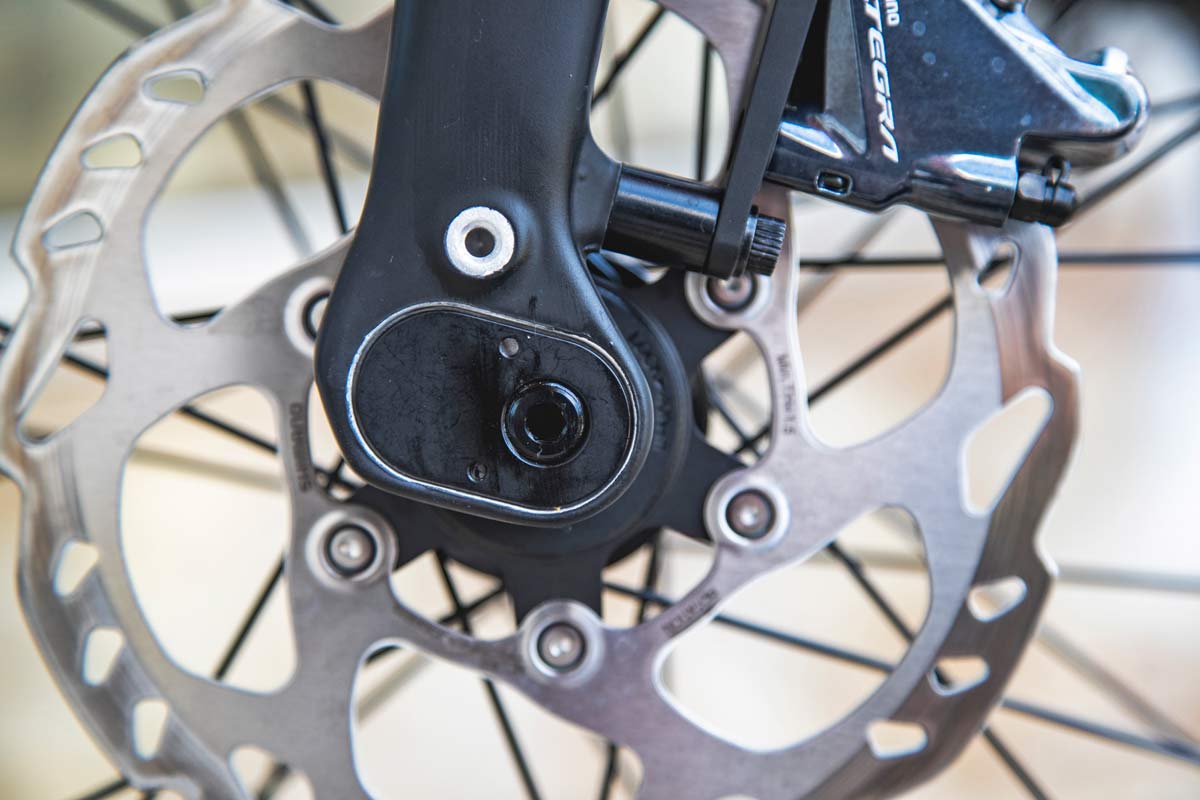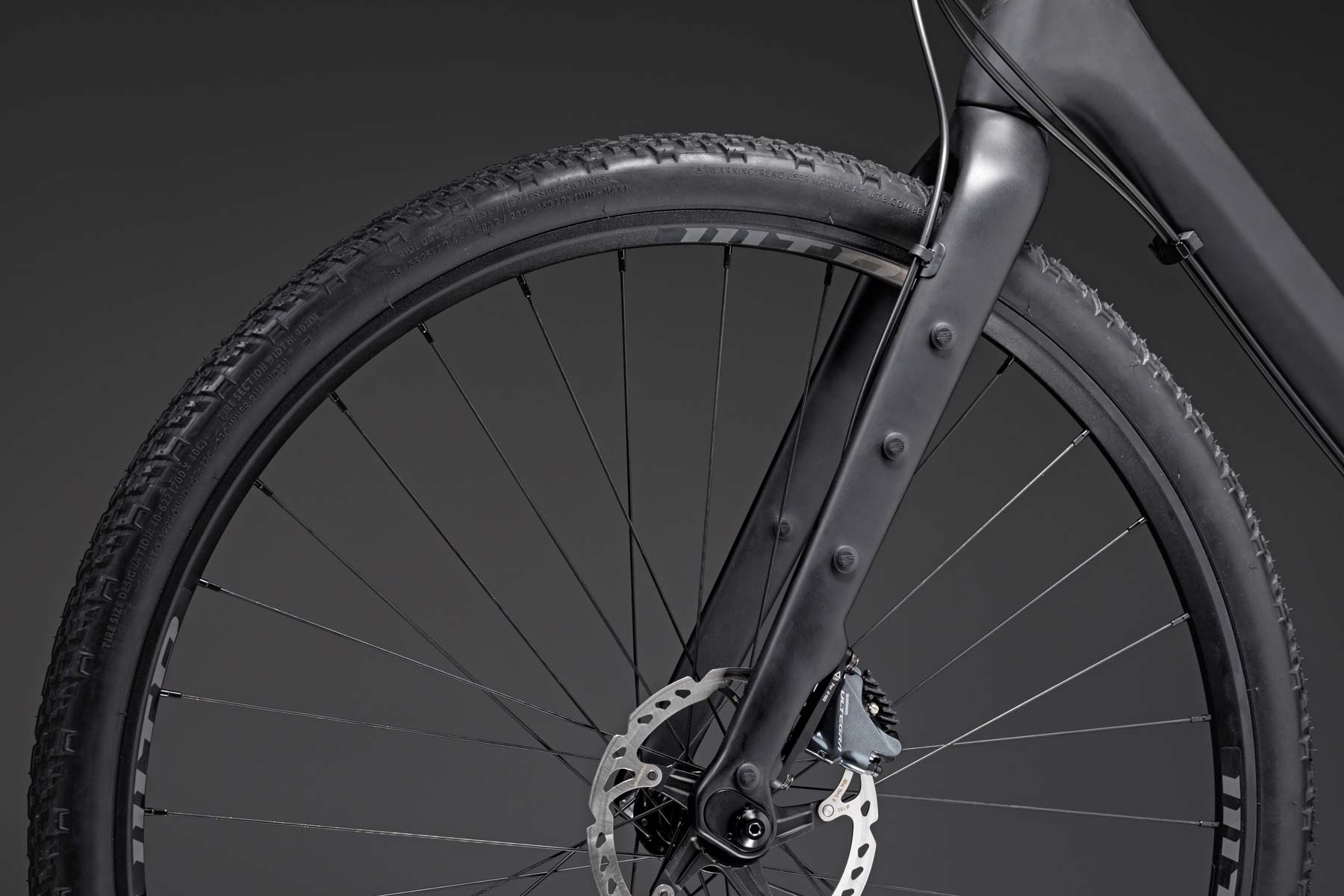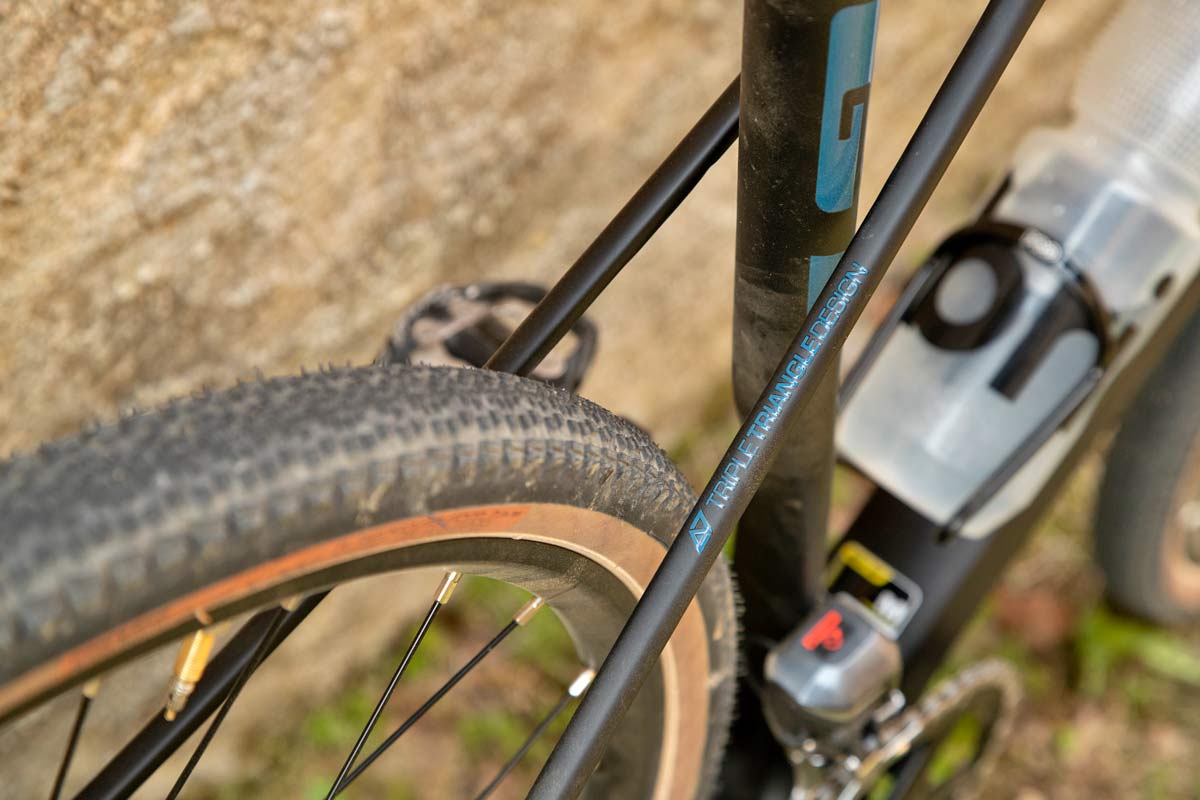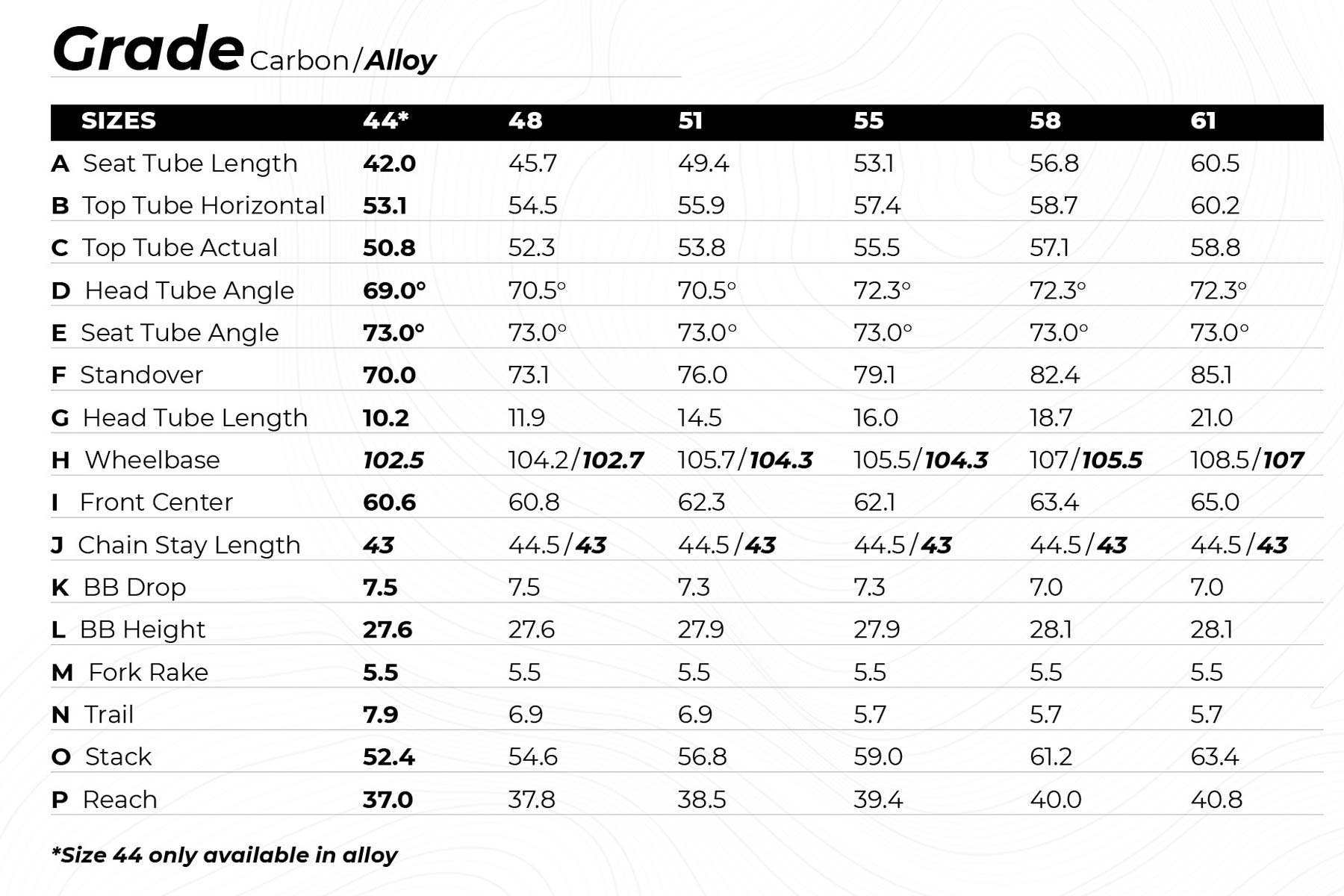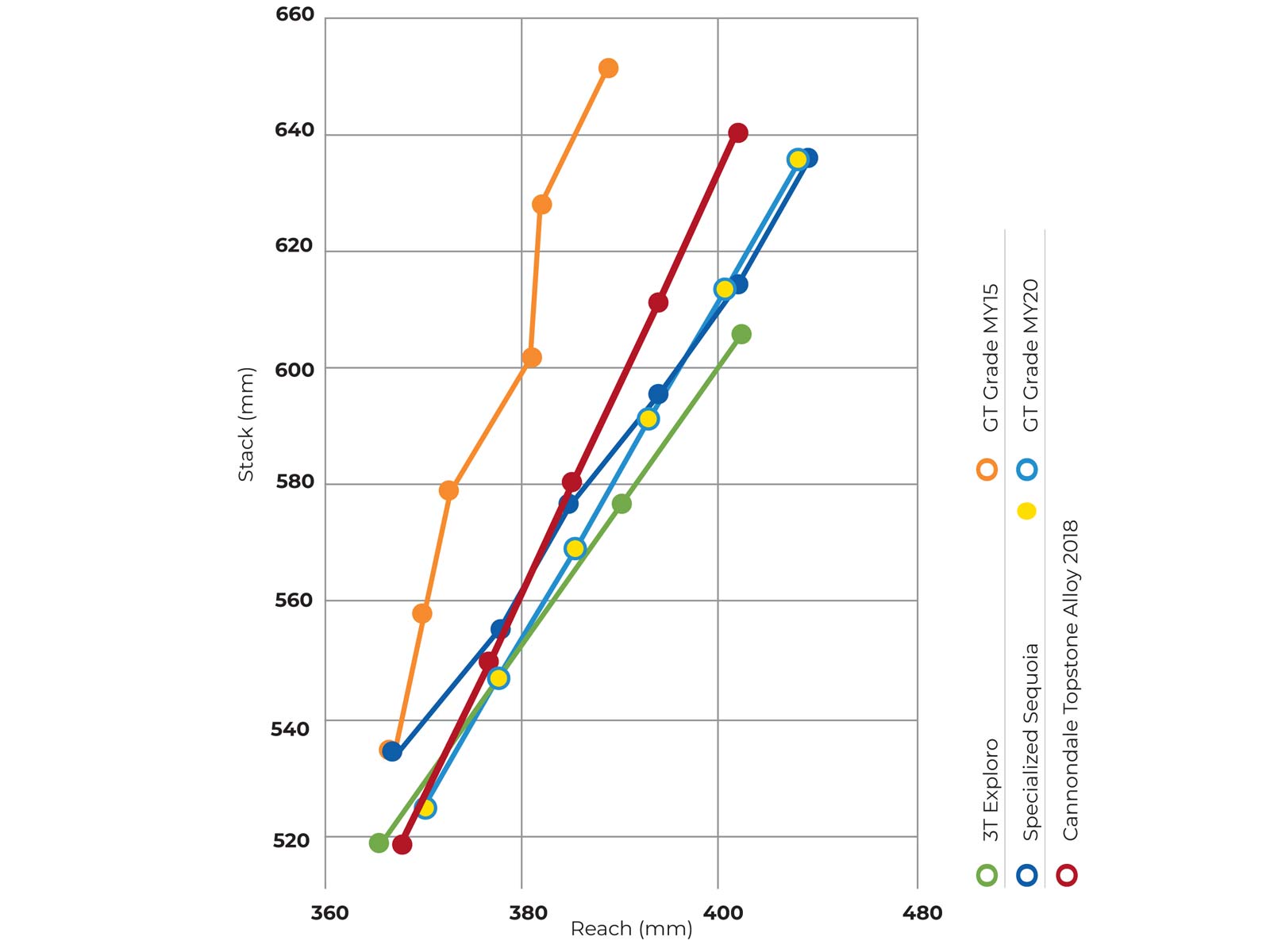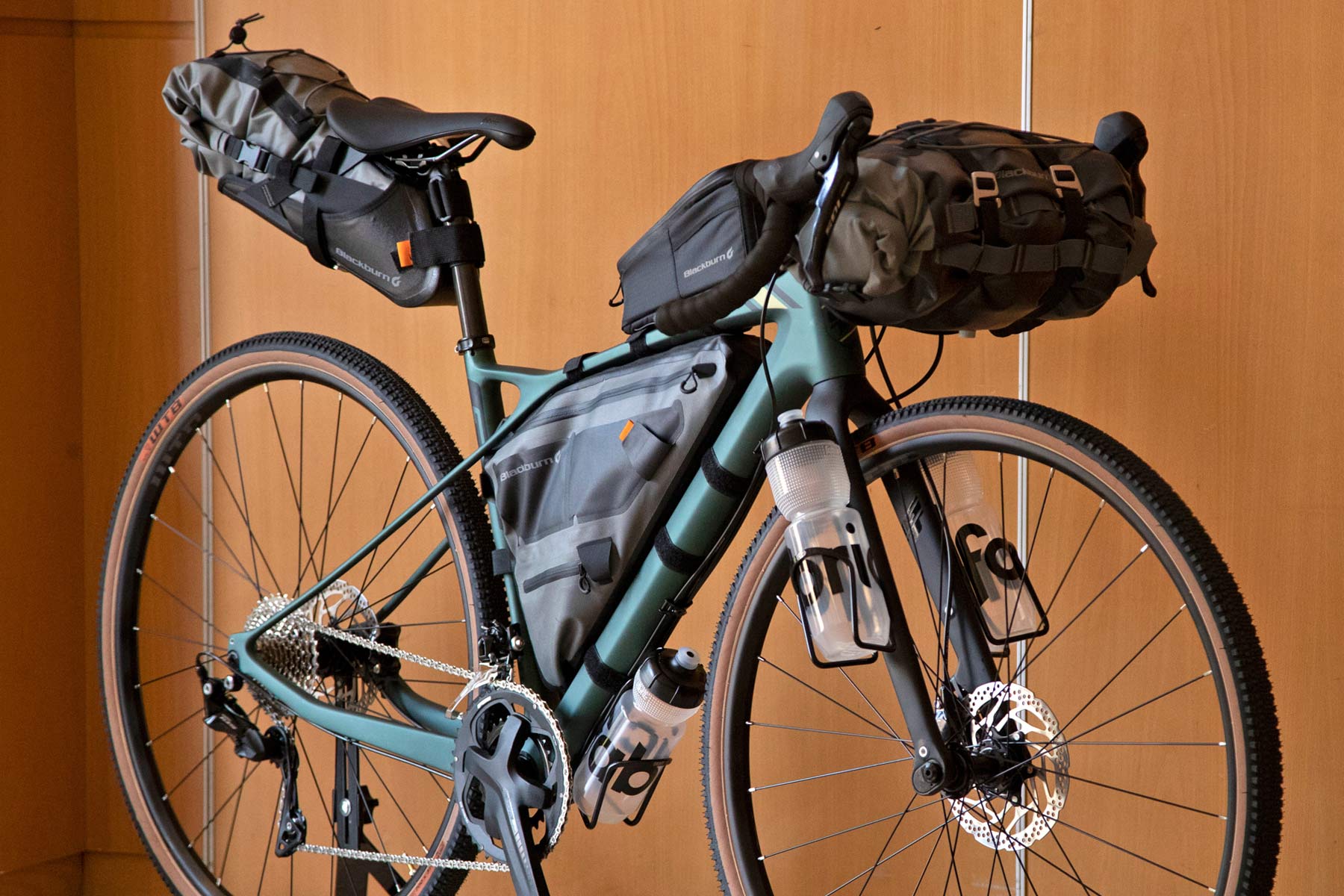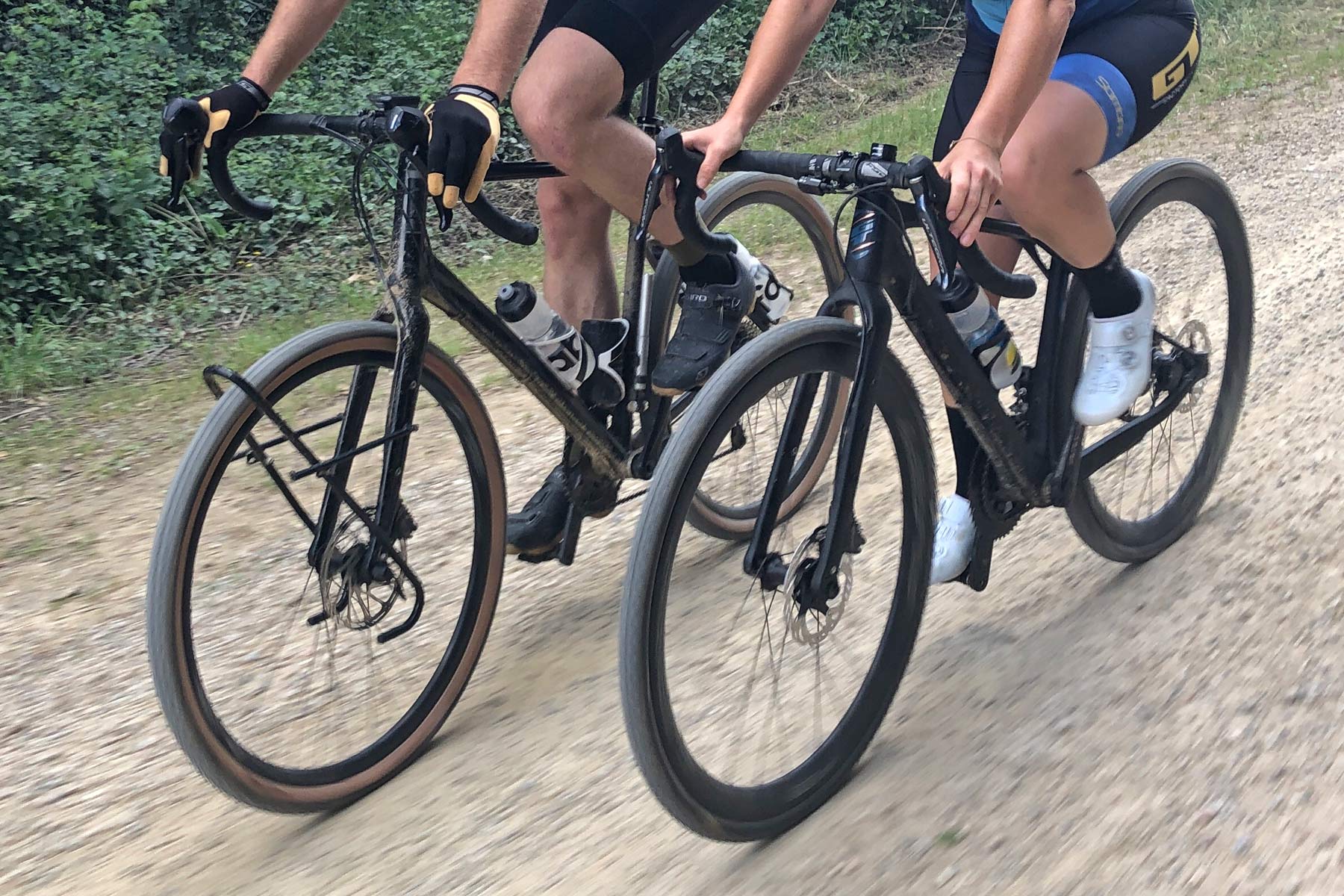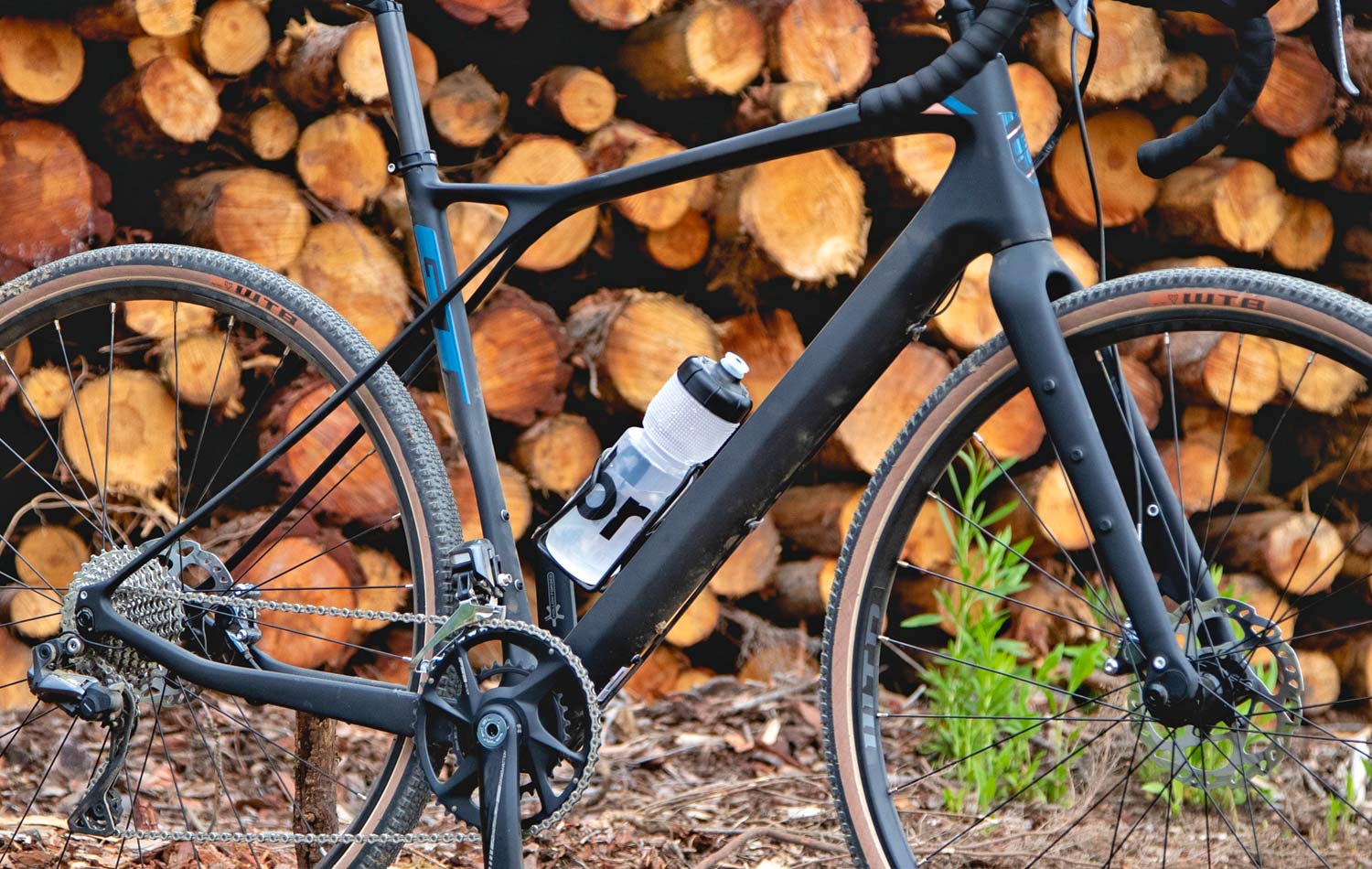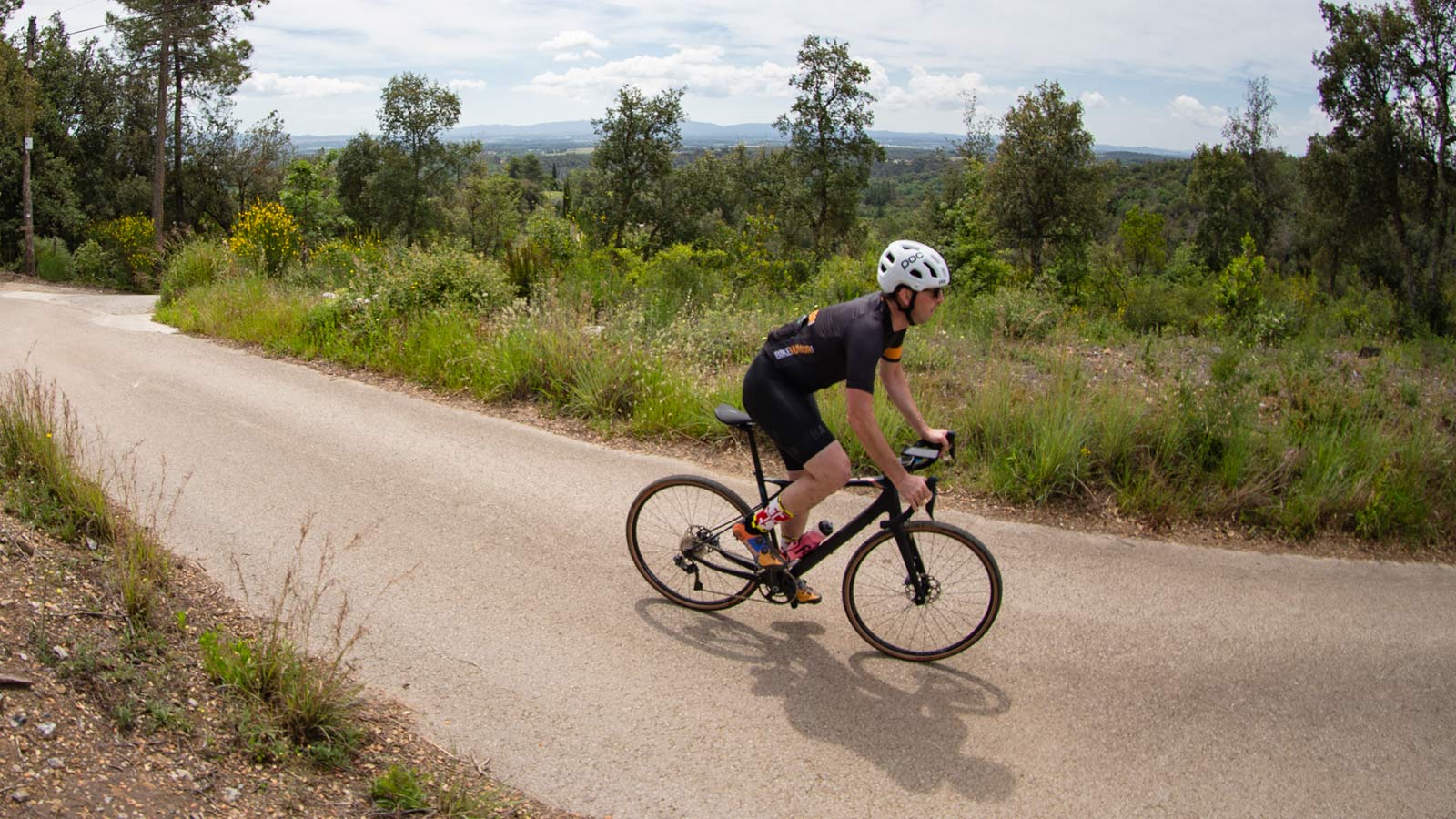Rooted in off-road since their origins, GT was the first to create a real carbon gravel bike five years ago. Now GT is back with all-new, updated and more comfortable Grades in both carbon & alloy. At first glance they look almost identical to that old bike, but don’t let that fool you. The new Grade gets a totally new take on the old Triple Triangle tech to improve all-day comfort, a new flip chip fork to maintain control when loaded down, more adventure-ready mounting points, and more…
2020 GT Grade 700c carbon gravel bike
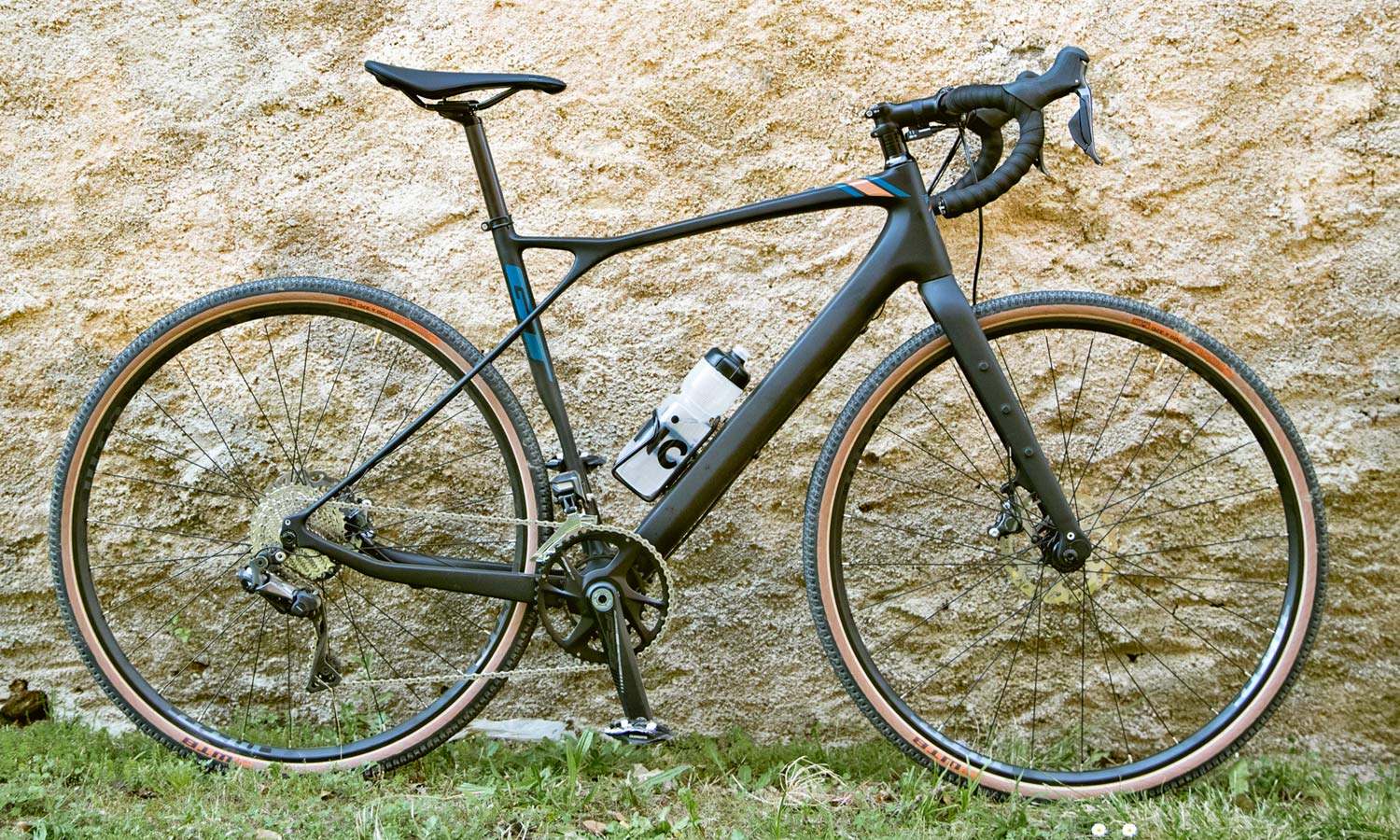
GT’s Grade does one thing we don’t see much these days. It takes a stance and delivers performance for a certain application, without trying to be everything to everyone. While gravel bikes often preach universal flexibility from road to off-road adventure touring, and 700x28mm tires to 650×2.1″ (or now even 2.4″) tires, the Grade sticks to its ideals as a fast-moving 700c gravel bike.
It adds more tire clearance now, but GT’s design team chose to focus on proper adventure racing, so it still gets road-based geometry & builds. As a modern gravel bike, the new Grade still bridges the gap between endurance road / gran fondo riding with more exploring off-road without trying to become a mountain bike.
So what’s new in 2020 (or now really)?
Probably the biggest impact on the rider is added comfort. The new bike again uses GT’s ‘Dual Fiber Dynamics’ which makes the seatstays out of a solid, long strand, low-modulus glass fiber core, which gets over wrapped with carbon fiber for additional stiffness. While carbon can be more stiff & brittle, the more flexible fibers that make up these super flat seatstays allow the rear end to eat up some vibration. Now those unique stays get a bit longer, as they bypass the seattube.
New look at GT Triple Triangle tech
While keeping the same classic GT Triple Triangle design, the seatstay now go around the seattube not touching it. This makes the lo-mod stays even longer (and more effective), while better transmitting rear wheel forces & vibration away from the seatpost into the front triangle.
With this new layout the seattube can again flex even more down near the bottom bracket where it gets a much more dramatically flattened section than the original. Even though the seatstay are so flexible that you can squeeze them together in your hand, they don’t actually deflect much when riding, with most of the rider movement isolated to this rear wheel cutout at the base of the seattube. GT even says that the rear end can withstand much more than the 280lb rider weight limit set by the bike’s more on-road style classification.
Maybe even more helpful, the aluminum bike was able to get much more comfortable by doing the same thing. Extending the stays around and not welding them to the seattube brings a big boost in alloy comfort.
Grade Flip Chip fork
The new Grade is also more adventure focused than before, and gets that in the details. A new fork tip flip chip was developed to allow them to offer a lower fork trail. While it strikes similarity with the Rondo design that does more to create a bike with two distinct characters with different angles & overall geometry (the Rondo system is oriented more vertically), GT took a different tack. By creating a more horizontal flip chip it is intended to be used to decrease trail when the front end of the adventure bike is loaded down with heavy gear to bring back faster handling. It also has the side benefit of being useful when you push to the absolute largest tire size which affects trail as well.
The dual offset fork is said to add just 30g, while offer a standard 67mm trail, swappable down to 40mm (in around 10 minutes including spacing the brake) to get that nimble feeling back for loaded touring. GT actually had the same idea from one of their early 90’s steel mountain bike forks that offered adjustable trail.
Bigger tire clearance
Every gravel rider wants space for bigger tires, and GT delivers while keeping the endurance road feel of the bike. Official claim is that max tire size is 700x42mm, and the bike does lean towards 700c s a preference (no 650b complete bike builds here.) But they do know that some people want to run the smaller wheels, and it is designed to fit the 650x47mm of Road Plus standards. GT is pretty conservative when it comes to clearance. We looked closely at the frames, and surely riders have some leeway to squeeze a few extra mm wider tires in there. But this isn’t a wi.de. mountain bike tire gravel bike.
Geometry
The new Grade comes in five stock frame sizes (XS-XL) now with more with even and linear Stack & Reach steps along the way.
Essentially the geometry remains the same endurance road / gravel race style as the original Grade, but now with a bit less Stack and a bit more Reach to better hit what most fast gravel riders are looking for these days. The carbon & alloy bikes share the same geo, beside the slightly longer chainstays needed for alloy construction – 430mm vs. 445mm.
Tech details
The new Grade also carries over the ‘Mounting Points Galore’ attachments points from the original, getting you even more mpg out of your gravel bike. There are anything cages on fork, cages inside the front triangle & under downtube, plus bento box mounting. The alloy bike even adds mounts onto the seatstays for a max 8 eight bottles possible. The bikes also get full coverage fender capability thanks to an o-ring removable seatstay bridge, and also get rack mounts on the inside of the fork.
GT specs all of the bikes with wide 16° flared bars (interestingly the the same as the original which lied about being 14° to try not to scare people.) And while the complete bikes do not get spec’d, both the carbon & alloy frames are now stealth dropper seatpost ready with internal routing and 27.2mm posts. The mostly external routing now does add internal Di2 routing and you can put the battery in a regular seatpost, or down at the BB if you run a dropper.
The bike gets flat mount brakes, but like some others we’ve seen 160mm is the minimum. So you run the flat mounts in the standard (140mm) position for 160mm rotors, and flip the adapters if you feel the need to move up to 180mm rotors. For when you want to flip that chip in the fork, you just remove the standard spacers behind the flat mount adapter.
GT claims a weight of 980g for a carbon frame in a size Large. They didn’t really talk much about weight, but that’s pretty much the same weight as the original, with the added comfort & tire size benefits. GT says that stuck with industry standards rather than making up new ones, so the bike gets a PF30 bottom bracket in carbon, threaded in alloy, tapered 1.5″ steerers, and 27.2mm posts.
Pricing & availability
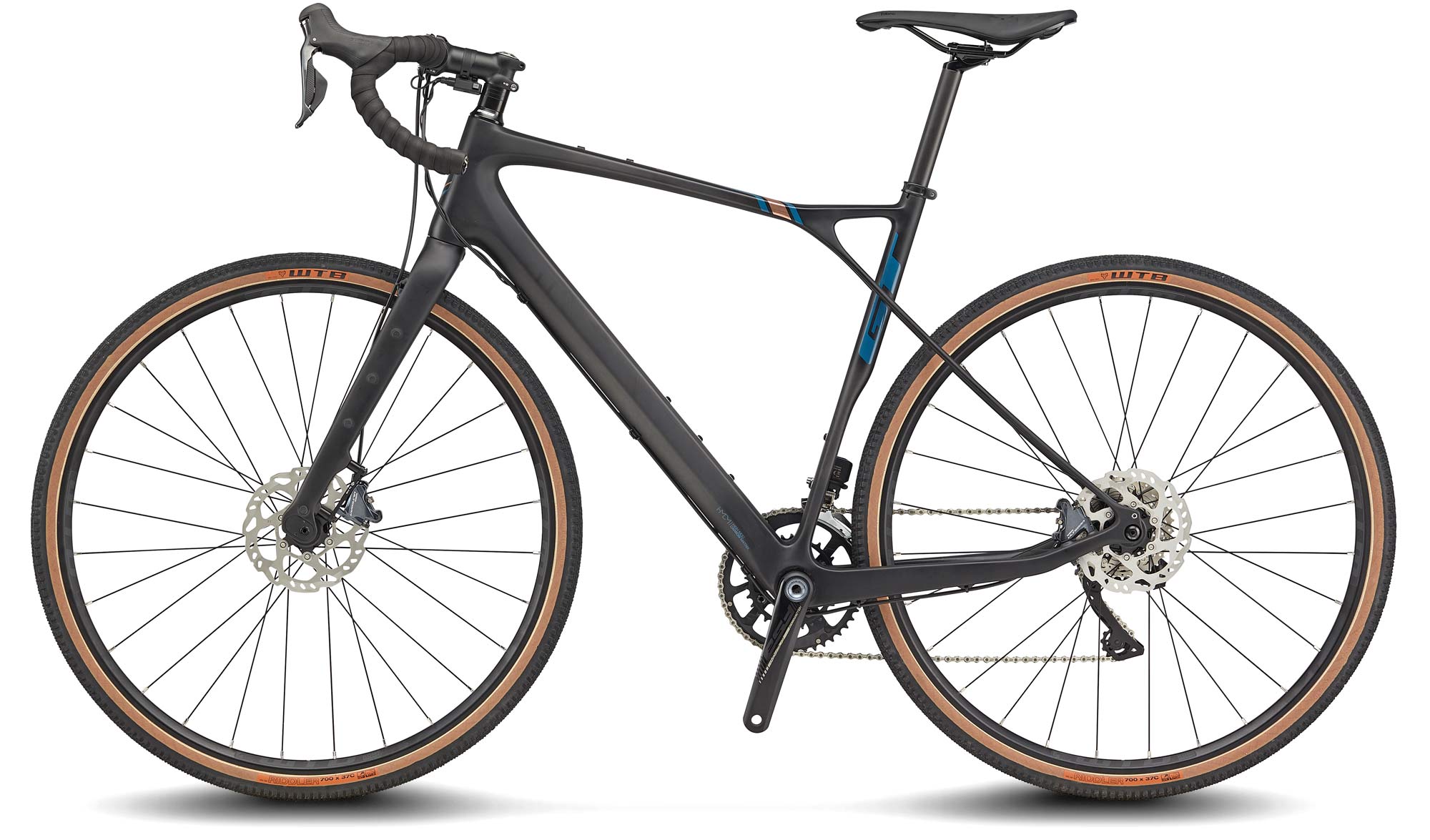
The new Grade come in five complete bikes across a wide price range. All bikes get tubeless ready 37mm WTB tire & wheel combos, taped and ready to drop the included tubeless valves in. They also all get 2x drivetrains, but we are told to expect 1x GRX builds next year once the components are actually available.
The top Grade Carbon Pro that I rode sells for $3900 / 3800€ with an Ultegra Di2 build.
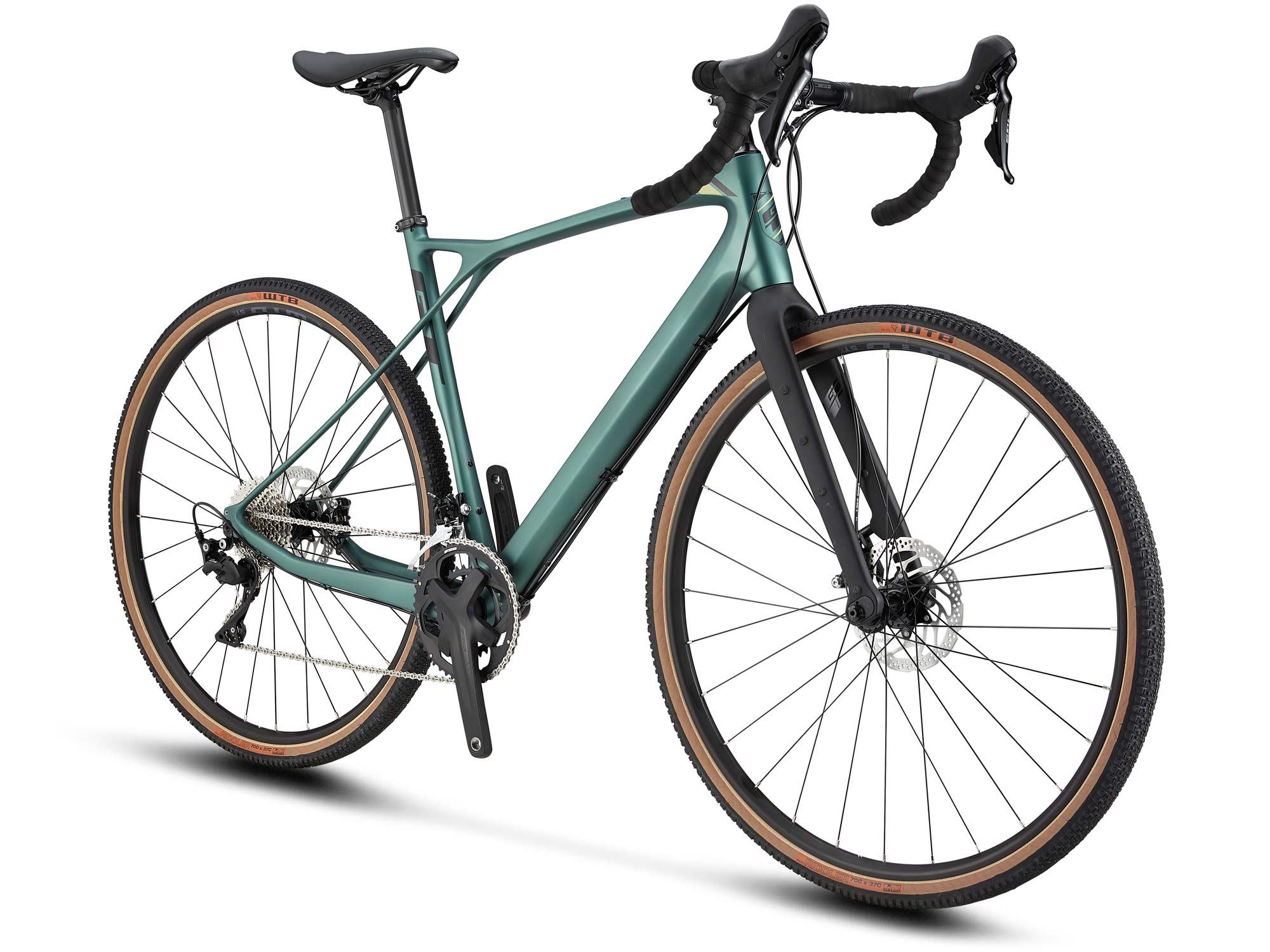
The next down Grade Carbon Expert share the same frameset, but gets a much more affordable $2500 / 2400€ price with mechanical 105. How’s this – with the same effective build level as before, this bike is actually $100 cheaper than in 2014!
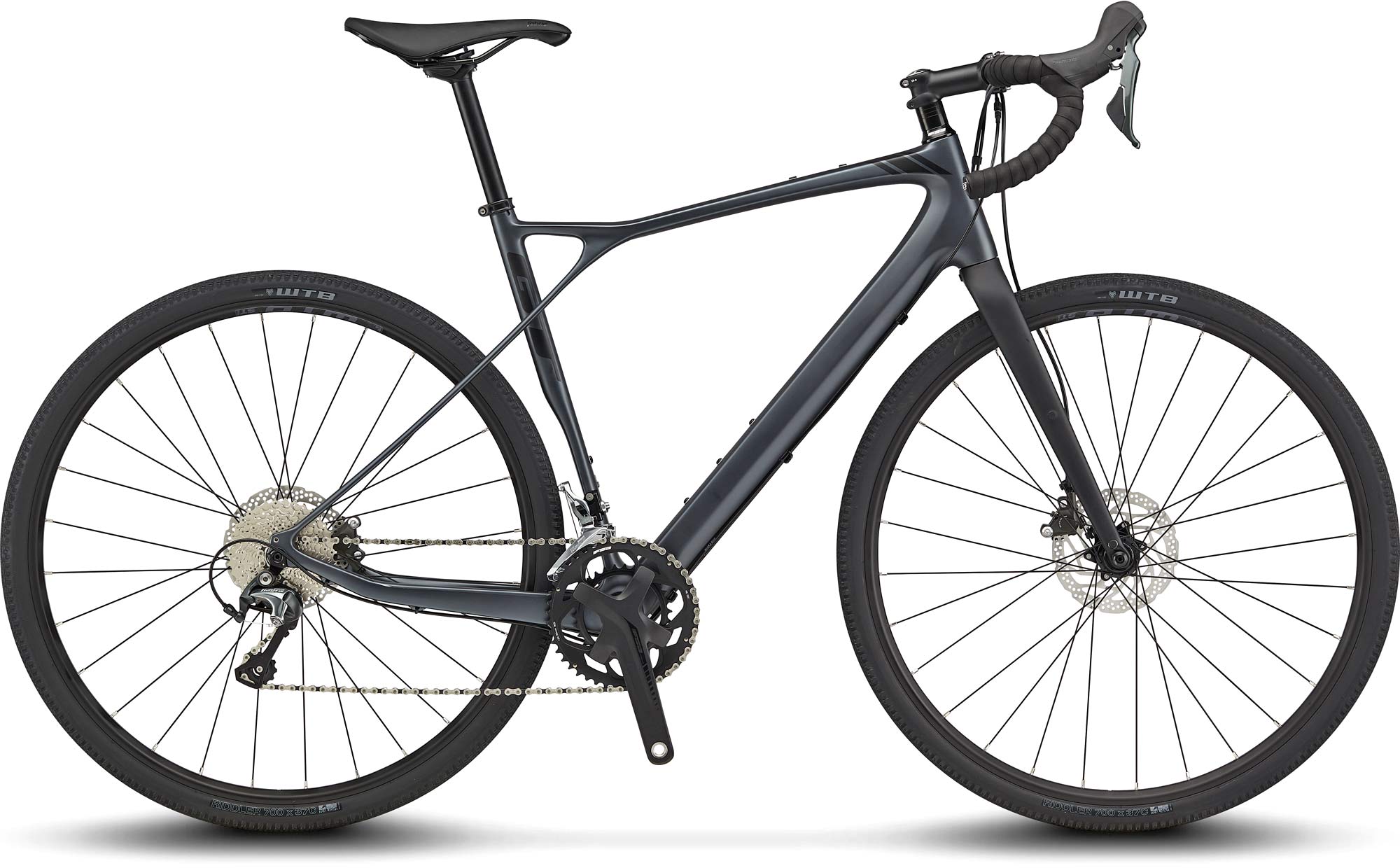
The Grade Carbon Elite is the cheapest with the carbon frame at $2000 / 2000€ with Tiagra 2×10, but doesn’t get the flip chip fork, instead sticking with the standard (rearward) axle position.
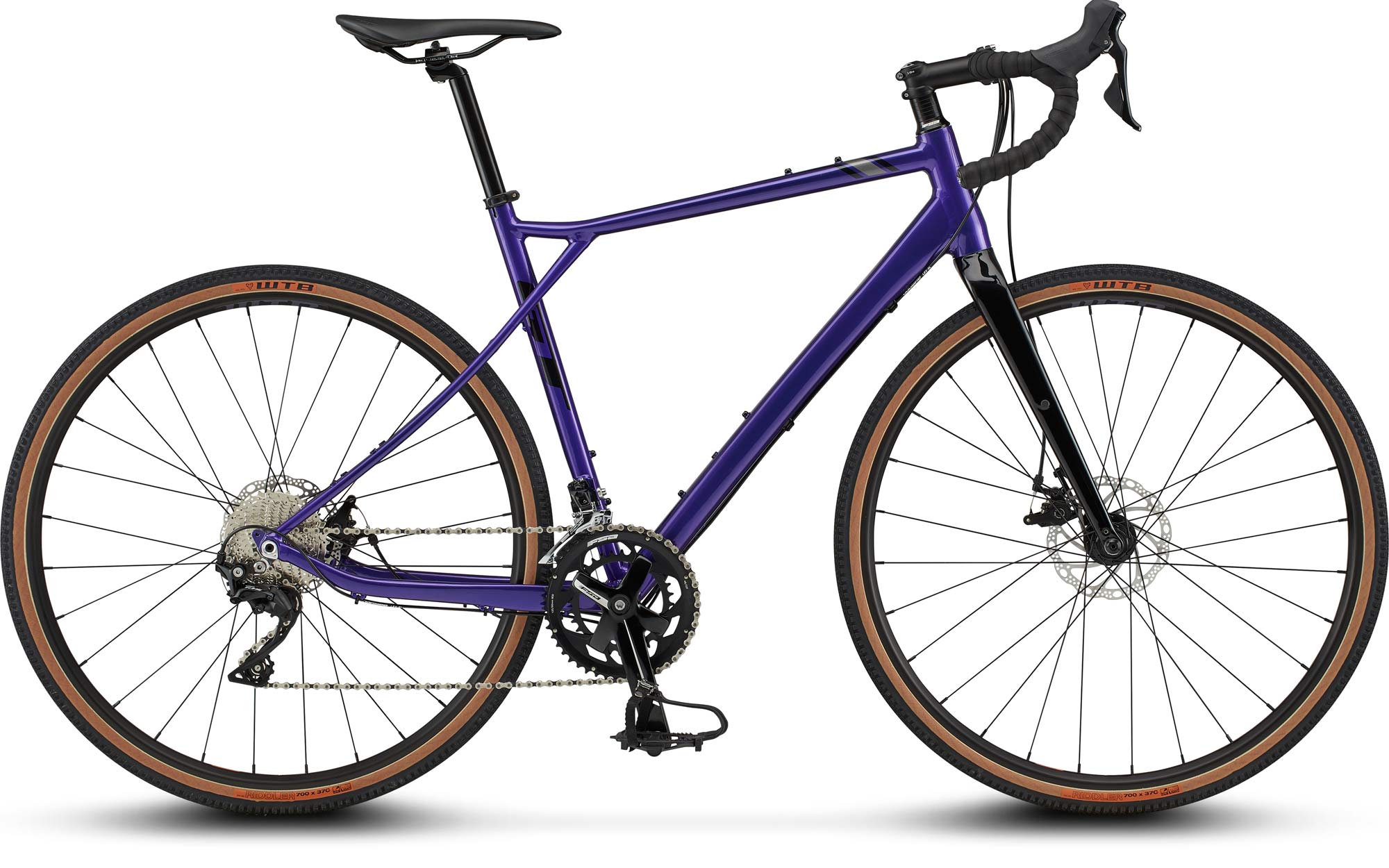
The $1500 / 1400€ aluminum Grade Expert features a 105 double with the straight carbon fork.
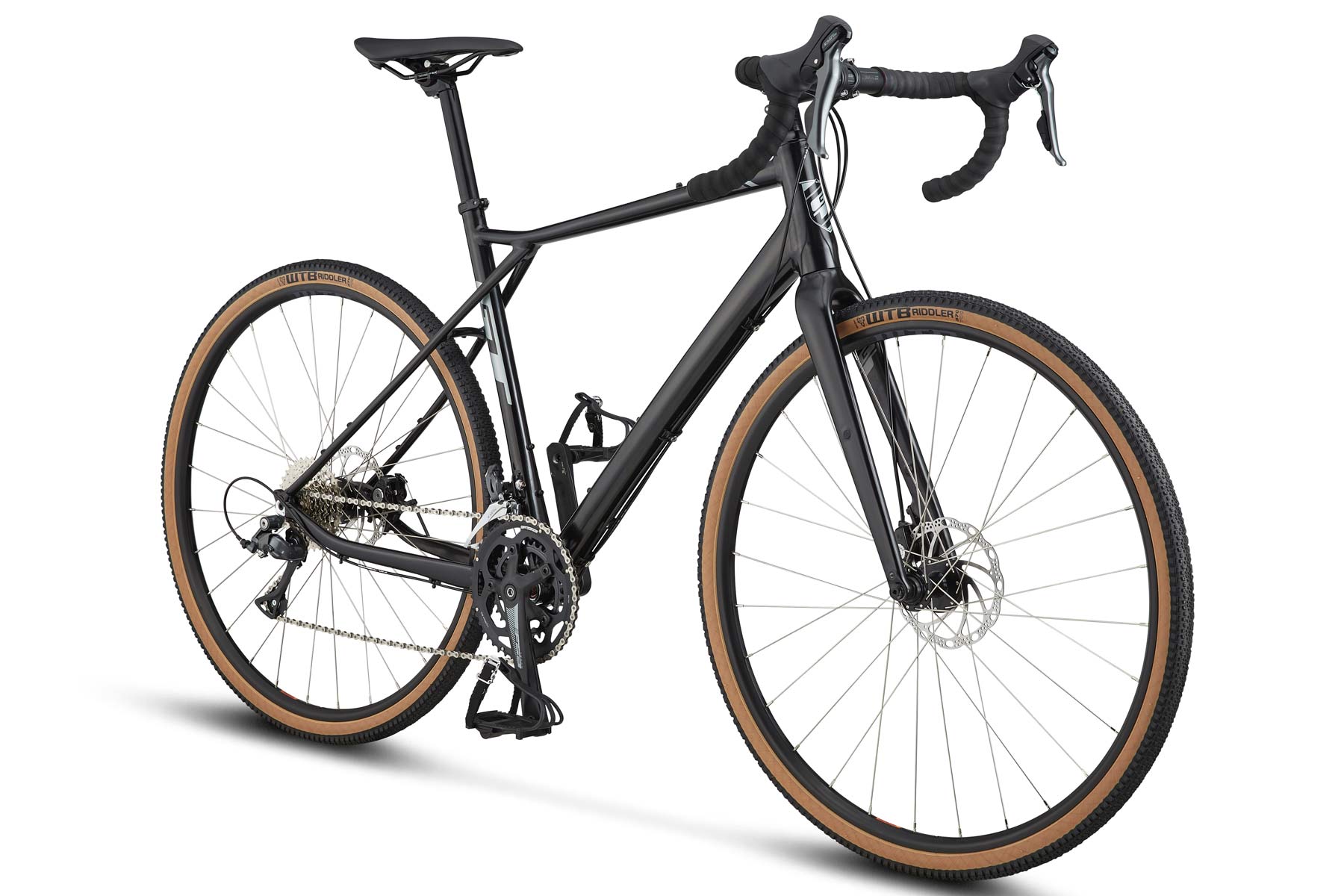
And the Grade Elite is the budget entry into gravel for GT, with the alloy frame, carbon fork, a Claris 2×8-speed drivetrain with mechanical discs, and a $1000 / 900€ price tag.
No word on pricing, but GT says that in some markets a separate carbon frameset with the flip chip fork should be available later this summer.
So when can you get it? Almost now really. The new Grade is actually in transit to your local distributor now, with shop availability expected by the middle of June (so two weeks from now.)
